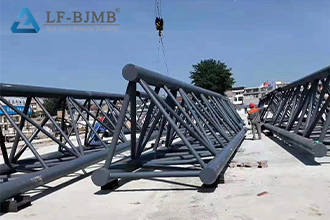
The requirements of trusses on welding technology depend on several factors, including the design of the truss, its use, material, and load requirements. Generally speaking, trusses require relatively high welding technology because the quality of welding directly affects the structure’s strength, stability, and safety.
The following are some aspects of joist requirements on welding technology:
Quality of welds: Joist structures usually require high-quality welds to ensure adequate strength and durability of the welded parts. The welds should withstand the various loads and stresses to which the joist may be subjected in service.
Geometric Accuracy: The geometry of the truss structure is critical to its performance. The welding process needs to ensure that the dimensions and geometry of the joist meet the design requirements to ensure structural stability and integrity.
Welding Material: Selection of the proper welding material is critical to the performance of the joist structure. Different types of steel or other alloys may require different welding materials and welding methods.
Welding Process Control: Controlling the temperature, speed and other parameters of the welding process is a key factor in ensuring the quality of the weld. This requires highly skilled welding techniques and experience.
Non-Destructive Testing: Non-destructive testing of truss welds is a common quality control tool to ensure that welds are free of hidden defects. This may include methods such as ultrasonic testing, X-ray testing, or magnetic particle testing.
Overall, trusses require a high level of welding technology, experienced welding engineers, and a highly automated welding process to ensure the quality and safety of the structure.











 About Us
About Us 2024-01-24
2024-01-24


